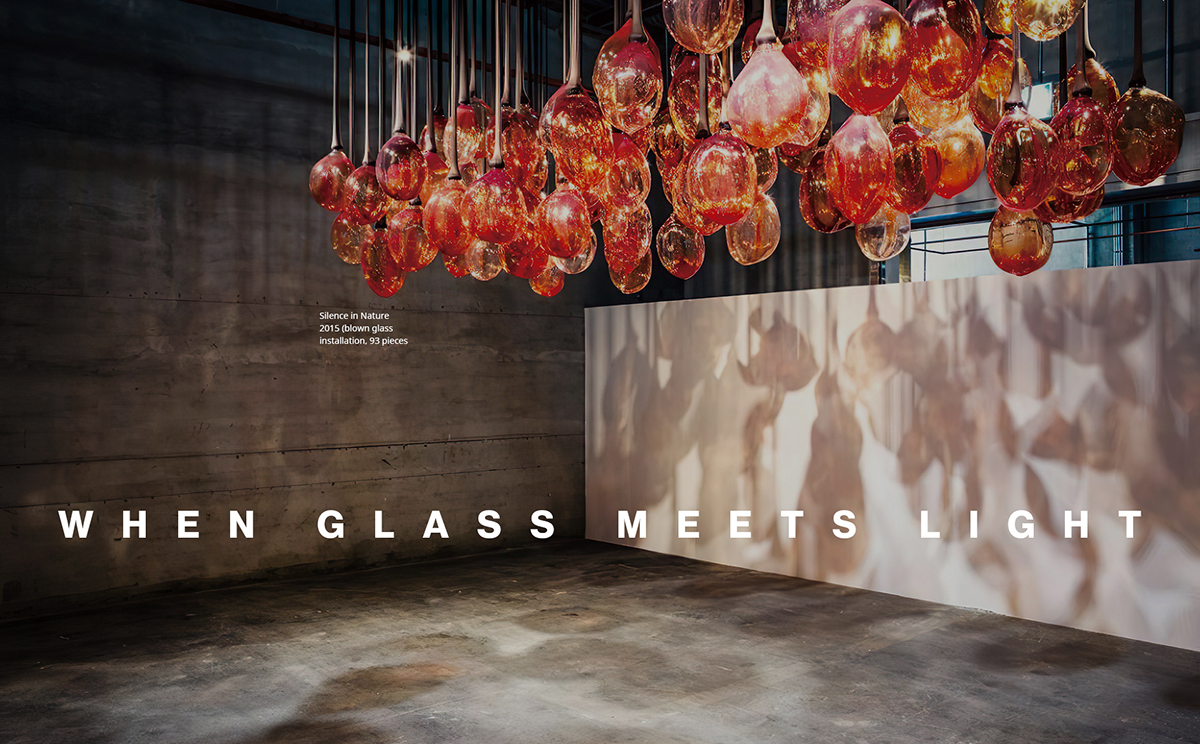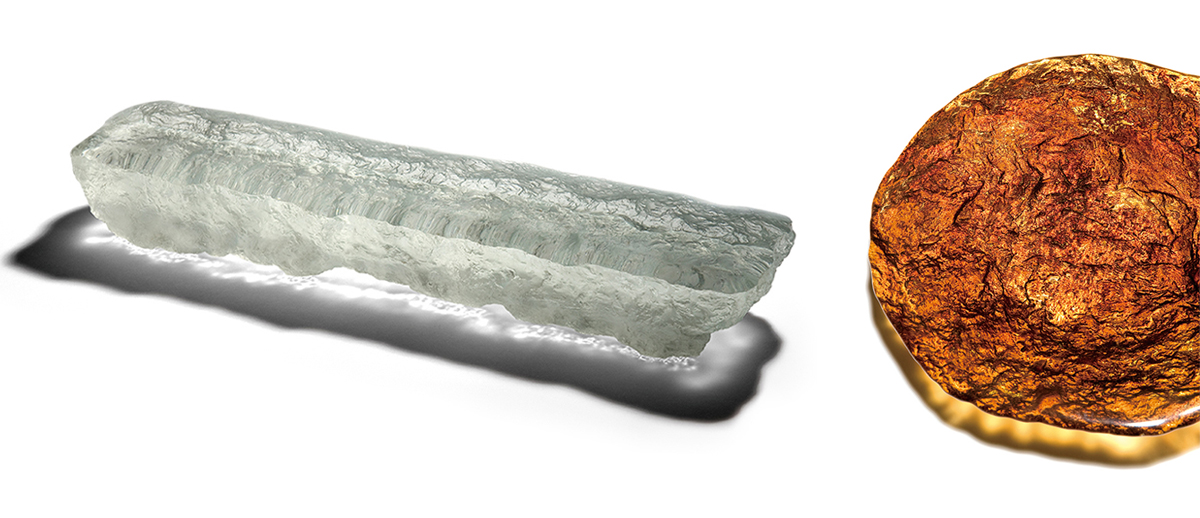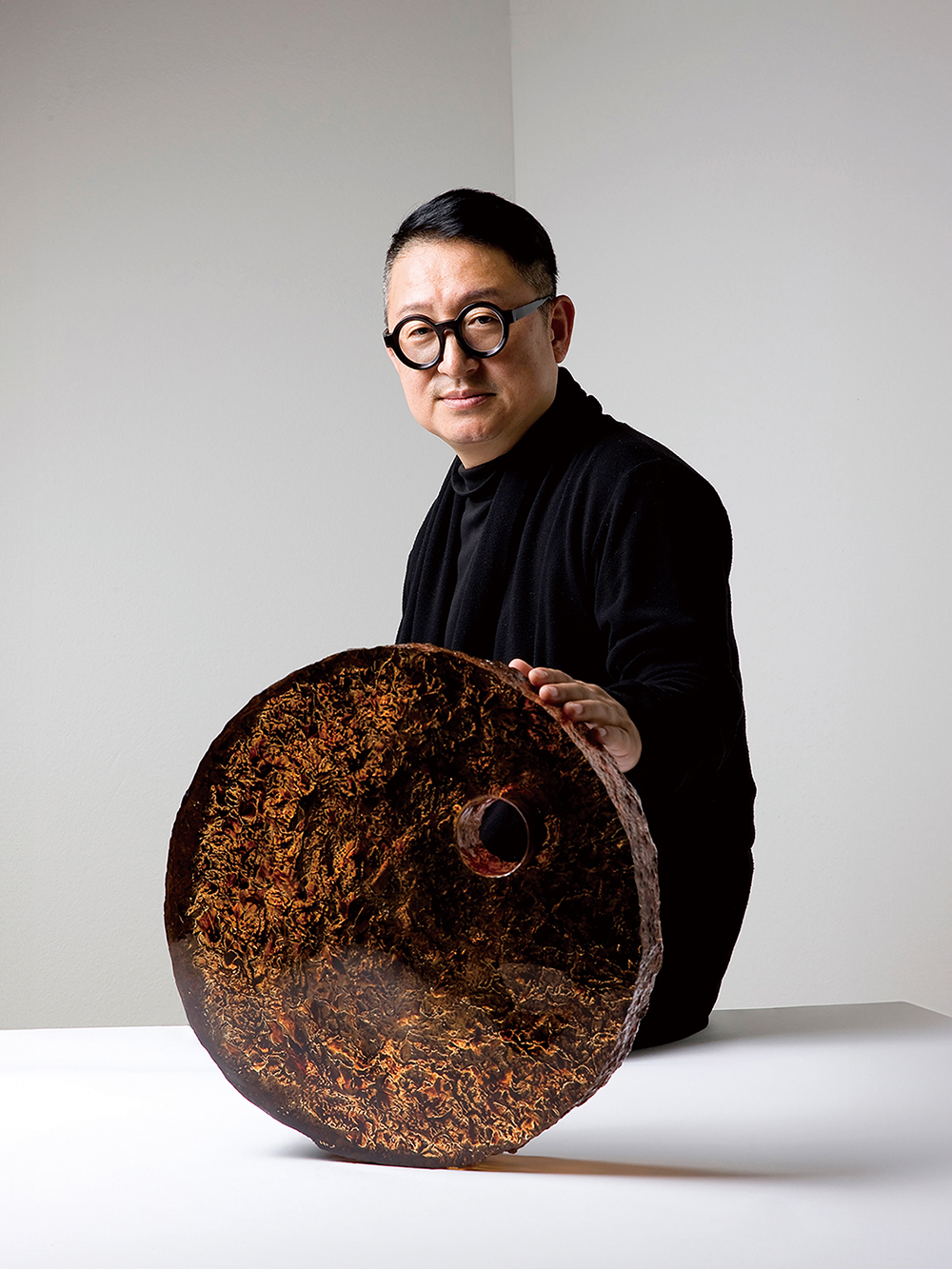
Art+Future
- Writer.Sung Ji Yeon
- Photos courtesy of.Lee Kyou-Hong
We often see synergy being created when different substances are brought together as one. Glass and light are no exception. When glass meets light, the light is sometimes reflected and sometimes transmitted, weaving beautiful pictures. Glass and light―if either one is absent, it becomes impossible to witness a miracle. Lee Kyou-Hong is a glass artist who crafts his works with such glass and light. His dazzling works sometimes evoke warm memories. At other times, they evoke present yearnings or bright tomorrows. Lee’s works touch people's hearts in that way.
Lee Kyou-Hong
Q. What led you to work with glass?
It began during my high school years when I embarked on my artistic journey, seeking paths less trodden by others. Resources for obtaining glass materials were scarce in Korea at the time, with few universities offering instruction on glass—rendering somewhat of a glass barren. Intrigued by the uniqueness of glass, I ventured into the realm of glass crafts. As a child, I had been profoundly moved by the beauty of glass, like stained glass, during visits to cathedrals. Those experiences seem to have shaped my decision to pursue glass.
Q. Tell us about your exhibition series.
I’m exhibiting four series: “Silence in Nature,” “Trace of Time,” “Breathing of Light,” and “Floating into the Light.” “Silence in Nature” and “Trace of Time” are series that stem from my memories; I find glass apt for expressing the intangible—unseen, spiritual and memories. Thus, I sought to portray scenes from my recollections in glass.
Over time, I reflected on what mattered most in my creations and concluded that “the emotional resonance of glass with light” held the utmost significance. Consequently, through “Breathing of Light” and “Floating into the Light,” I presented pieces that optimize the interplay between light and glass, heightening the glass’s inherent qualities.
Q. What memories did you express in your works?
“Silence in Nature” reflects the awe I experienced in nature. For instance, there’s “Silence in Nature 2015”―a piece capturing the luscious ripeness of persimmons. During my childhood, I briefly resided in a rural home with a yard where a persimmon tree stood. I crafted a piece inspired by my innocent perspective on that fruit.
“Trace of Time” embodies artifacts. Among memories from my early years, I recreated objects like straw mats, grinding wheels and basins into glass forms. “A Memory of Island” was created by imprinting and painting a photograph taken with my father onto glass.
Q. Why integrate your past into your works?
Before focusing on the creative domain at university, I delved into studying “form.” Subsequently, while studying abroad in the U.K., I encountered the question, “Why do you create art?” I aspired to use my art to heal others as a visual artist. Thus, I choose “my past” as my theme, especially memories of living with my father in his hometown, Jindo Island, in Jeollanam-do―a portrayal of my deeply personal experiences yet with universal resonance.
Q. The style evolved from depicting the past to highlighting glass’s beauty.
I gradually gravitated towards emphasizing the properties of glass. The iconic piece of the “Trace of Time” series―Hwak 19NO05― portrays a stone water basin. Throughout this process, rather than focusing on expressing a specific narrative through the work, I aimed to create a piece that ultimately functioned as “a radiating pure glass blob.”
On that note, the “Breathing of Light” series is incepted entirely, focusing on light and glass. The work “BL23AU10” was crafted by sprinkling glass pigments onto a mirrored surface, baking it, and then putting on shattered glass fragments with a hammer. This work reacts in real-time to changes in time or light caused by the movements around it, showing the notion of “movements in stillness.”
In “Floating into the Light,” glass pieces in the same color were arranged on wide and clear acid etched mirrors to emphasize the beauty of light. These glass pieces imbued with light, appear to float in mid-air, blending harmoniously with shadows.

(Left) Hwak 19NO05, Cast Glass, 18x80x23 cm, 2019
(Right)CL221023, cast glass and ottchil with gold leaf, 2022
Q. You were selected as a finalist for the 2023 LOEWE FOUNDATION Craft Prize.
The piece selected for this competition―“Trace of Time”―was constructed by combining casted glass with ottchil (traditional lacquer sap technique), and gold leaf. Utilizing ottchil added a more brownish hue to the piece, creating an antique touch. Additionally, I contrasted the properties of glass and ottchil to further highlight the glass.
Q. Why do you use materials other than glass?
I tend to work with other materials to accentuate the glass to the fullest. As for the screen stained glass, wood was incorporated. The wood used here was from window frames found in a 60-year-old monastery. However, of course, the stained glass remains the protagonist and the intention of adding wood was to enhance the prominence of the glass work.
Q. You must manage a lot in your work.
In Korean, the term for art, misul, translates to “beautiful technique.” Therefore, I hold the belief that the essence of art lies in “revealing beauty.” Therefore, rather than crafting something with profound meanings but lackluster results, my primary focus is on creating “beautiful artworks” that truly embody the essence of art.
That’s why I place significant emphasis on “highlighting the properties of glass” in my work. To allow individuals to appreciate the core of art and to heal wounded hearts through it, the artwork must exude beauty, which hinges on the effective utilization of materials such as light and glass.
Q. Do you have any goals as an artist?
I recently opened a studio named Jang Hwa Ri―where jang means bright, hwa means shining, and ri means glass―translating to “Brightly Shining Glass.” As implied by this name, I aspire for my creations to emanate positive energy with light.
Q. Do you have any upcoming plans?
I am scheduled to exhibit in Cromwell Place, London, from May 14 to 22. Additionally, I plan to participate in the Kiaf SEOUL art fair, held in Korea in the coming Fall.

CL221025, cast glass and ottchil with gold leaf, 2022





